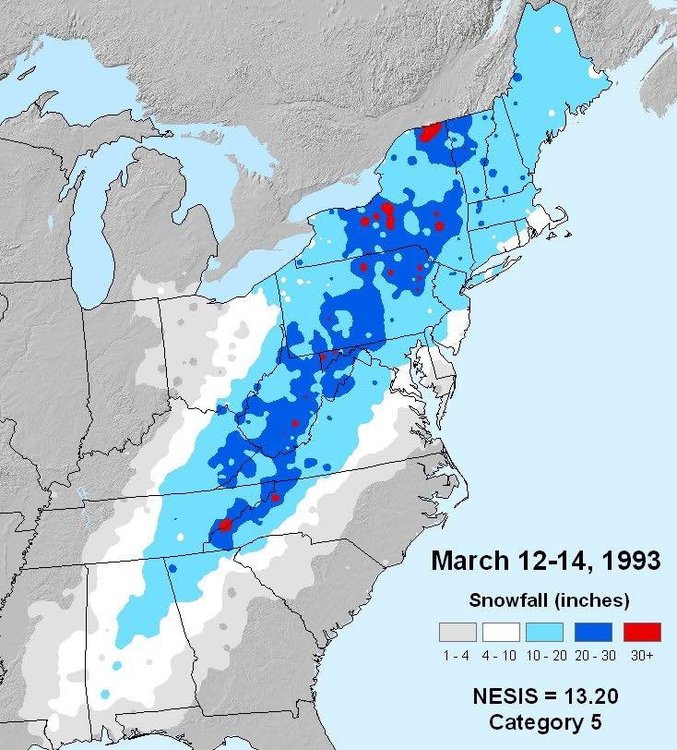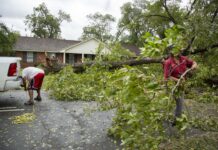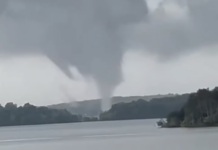
March 13, 1993, was a banner day in the weather community. Few storms are referenced as often as the Storm of the Century. Around here, you’ll still hear people regularly talk about the “Blizzard of ’93.”
For meteorologists, this storm is a regularly studied event. The atmospheric conditions that led to it were phenomenal and something that we likely won’t see again for a long time. The storm dropped snow from the beaches of Florida all the way through Maine. The highest totals came on Mt. Leconte in Tennessee with 56 inches and Mt. Mitchell in North Carolina with 50 inches.
One of the hardest hit regions was Northwest North Carolina, where widespread 3-foot totals fell, and livestock was fed hay bales by helicopter for a week.
North Georgia
Official totals from the storm across North Georgia are hard to find. Thousands of downed trees, stranded motorists, and power outages caused a gap in records for many reporting stations during the storm.
The Atlanta Airport officially picked up 4.5 inches, with the northern suburbs officially seeing 10 inches. Around Northeast Georgia, totals ranged from 10-18 inches of snow with drifts of 3-4 feet in spots.
The heavier totals fell on the northwest side of the region, with areas closer to South Carolina receiving less.
The only official reporting stations I could find totals from were Ellijay with 16 inches, Blairsville with 18 inches, and Rome with 14 inches of snow.
The higher elevations around Brasstown Bald likely saw 2-3 feet, but no one was able to get there to measure until a couple of days after the storm when a National Guard Helicopter landed to drop off Larry Caudell and Barry Palmer so they could man a generator to keep communications running.
Unofficial reports of up to 35 inches were reported across Union County.
The winds that accompanied the storm only worsened conditions. Many locations were without power for a week. The number of trees lost was uncountable and one of the most memorable/unfortunate parts of the event for many people who saw property damage.
Behind the storm, temperatures plummeted to bone-chilling levels. Despite being in the 70s just a few days prior, air temperatures fell below zero across a large portion of the region. Blairsville dropped to -5 on the morning of March 15. That same day Dahlonega fell to 5 above, Helen and Clayton hit 6 degrees, Cornelia hit 14, and Gainesville reached 16.
Overall impacts
At the height of the storm, snow fell at a rate of 2-3 inches per hour. The snow fell so fast that anyone caught on the highways as the storm moved in was quickly snowed in. The storm closed nearly all interstate highways from Atlanta northeastward.
Every major airport on the East coast was closed at one time or another, which was unprecedented at the time. The storm caused the most weather-related flight cancellations in U.S. history.
The Blizzard of ’93 isolated thousands of people, especially in the Georgia, North Carolina, and Virginia mountains. Workers rescued over 200 hikers from the North Carolina and Tennessee mountains, according to the National Oceanic and Atmospheric Administration (NOAA). The National Guard was deployed in many areas, and several counties and cities enforced curfews and declared states of emergency.
Nearly 10 million people and businesses lost power.
The Storm of the Century caused $5.5 billion in damages ($10.8 billion in 2021 dollars) and claimed more than 270 lives in 13 states. Fifteen of those deaths were in Georgia.
The damage and deaths weren’t limited to land. According to NOAA, the Coast Guard rescued more than 160 people in the Atlantic Ocean and Gulf of Mexico, where at least one freighter sank. Forty-eight people were reported missing at sea.
SEE ALSO







